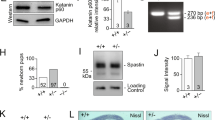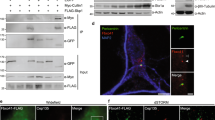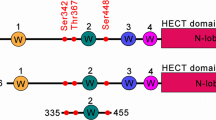Abstract
Pregnenolone (P5) is a neurosteroid that improves memory and neurological recovery. It is also required for zebrafish embryonic development. However, its mode of action is unclear. Here we show that P5 promotes cell migration and microtubule polymerization by binding a microtubule plus end–tracking protein, cytoplasmic linker protein 1 (CLIP-170). We captured CLIP-170 from zebrafish embryonic extract using a P5 photoaffinity probe conjugated to diaminobenzophenone. P5 interacted with CLIP-170 at its coiled-coil domain and changed it into an extended conformation. This increased CLIP-170 interaction with microtubules, dynactin subunit p150Glued and LIS1; it also promoted CLIP-170–dependent microtubule polymerization. CLIP-170 was essential for P5 to promote microtubule abundance and zebrafish epiboly cell migration during embryogenesis, and overexpression of the P5-binding region of CLIP-170 delayed this migration. P5 also sustained migration directionality of cultured mammalian cells. Our results show that P5 activates CLIP-170 to promote microtubule polymerization and cell migration.
This is a preview of subscription content, access via your institution
Access options
Subscribe to this journal
Receive 12 print issues and online access
$259.00 per year
only $21.58 per issue
Buy this article
- Purchase on Springer Link
- Instant access to full article PDF
Prices may be subject to local taxes which are calculated during checkout






Similar content being viewed by others
Accession codes
References
Hu, M.C. et al. Steroid deficiency syndromes in mice with targeted disruption of Cyp11a1. Mol. Endocrinol. 16, 1943–1950 (2002).
Hsu, H.J., Liang, M.R., Chen, C.T. & Chung, B.C. Pregnenolone stabilizes microtubules and promotes zebrafish embryonic cell movement. Nature 439, 480–483 (2006).
Grigoryev, D.N., Long, B.J., Njar, V.C. & Brodie, A.H. Pregnenolone stimulates LNCaP prostate cancer cell growth via the mutated androgen receptor. J. Steroid Biochem. Mol. Biol. 75, 1–10 (2000).
Iqbal Choudhary, M. et al. Pregnenolone derivatives as potential anticancer agents. Steroids 76, 1554–1559 (2011).
Flood, J.F., Morley, J.E. & Roberts, E. Memory-enhancing effects in male mice of pregnenolone and steroids metabolically derived from it. Proc. Natl. Acad. Sci. USA 89, 1567–1571 (1992).
Guth, L., Zhang, Z. & Roberts, E. Key role for pregnenolone in combination therapy that promotes recovery after spinal cord injury. Proc. Natl. Acad. Sci. USA 91, 12308–12312 (1994).
Bianchi, M. & Baulieu, E.E. 3β-Methoxy-pregnenolone (MAP4343) as an innovative therapeutic approach for depressive disorders. Proc. Natl. Acad. Sci. USA 109, 1713–1718 (2012).
Marx, C.E. et al. Proof-of-concept trial with the neurosteroid pregnenolone targeting cognitive and negative symptoms in schizophrenia. Neuropsychopharmacology 34, 1885–1903 (2009).
Ritsner, M.S. et al. Pregnenolone and dehydroepiandrosterone as an adjunctive treatment in schizophrenia and schizoaffective disorder: an 8-week, double-blind, randomized, controlled, 2-center, parallel-group trial. J. Clin. Psychiatry 71, 1351–1362 (2010).
Irwin, R.P. et al. Pregnenolone sulfate augments NMDA receptor mediated increases in intracellular Ca2+ in cultured rat hippocampal neurons. Neurosci. Lett. 141, 30–34 (1992).
Sabeti, J., Nelson, T.E., Purdy, R.H. & Gruol, D.L. Steroid pregnenolone sulfate enhances NMDA-receptor–independent long-term potentiation at hippocampal CA1 synapses: role for L-type calcium channels and σ-receptors. Hippocampus 17, 349–369 (2007).
Kavaliers, M. & Wiebe, J.P. Analgesic effects of the progesterone metabolite, 3 α-hydroxy-5 α-pregnan-20-one, and possible modes of action in mice. Brain Res. 415, 393–398 (1987).
Matsunaga, M., Ukena, K., Baulieu, E.E. & Tsutsui, K. 7α-Hydroxypregnenolone acts as a neuronal activator to stimulate locomotor activity of breeding newts by means of the dopaminergic system. Proc. Natl. Acad. Sci. USA 101, 17282–17287 (2004).
Fontaine-Lenoir, V. et al. Microtubule-associated protein 2 (MAP2) is a neurosteroid receptor. Proc. Natl. Acad. Sci. USA 103, 4711–4716 (2006).
Galjart, N. CLIPs and CLASPs and cellular dynamics. Nat. Rev. Mol. Cell Biol. 6, 487–498 (2005).
Nakano, A. et al. AMPK controls the speed of microtubule polymerization and directional cell migration through CLIP-170 phosphorylation. Nat. Cell Biol. 12, 583–590 (2010).
Li, H. et al. Phosphorylation of CLIP-170 by Plk1 and CK2 promotes timely formation of kinetochore-microtubule attachments. EMBO J. 29, 2953–2965 (2010).
Arnal, I., Heichette, C., Diamantopoulos, G.S. & Chretien, D. CLIP-170/tubulin-curved oligomers coassemble at microtubule ends and promote rescues. Curr. Biol. 14, 2086–2095 (2004).
Fukata, M. et al. Rac1 and Cdc42 capture microtubules through IQGAP1 and CLIP-170. Cell 109, 873–885 (2002).
Coquelle, F.M. et al. LIS1, CLIP-170's key to the dynein/dynactin pathway. Mol. Cell Biol. 22, 3089–3102 (2002).
Watson, P. & Stephens, D.J. Microtubule plus-end loading of p150Glued is mediated by EB1 and CLIP-170 but is not required for intracellular membrane traffic in mammalian cells. J. Cell Sci. 119, 2758–2767 (2006).
Lomakin, A.J. et al. CLIP-170–dependent capture of membrane organelles by microtubules initiates minus-end directed transport. Dev. Cell 17, 323–333 (2009).
Kholmanskikh, S.S. et al. Calcium-dependent interaction of Lis1 with IQGAP1 and Cdc42 promotes neuronal motility. Nat. Neurosci. 9, 50–57 (2006).
Swiech, L. et al. CLIP-170 and IQGAP1 cooperatively regulate dendrite morphology. J. Neurosci. 31, 4555–4568 (2011).
Neukirchen, D. & Bradke, F. Cytoplasmic linker proteins regulate neuronal polarization through microtubule and growth cone dynamics. J. Neurosci. 31, 1528–1538 (2011).
Sun, X. et al. Microtubule-binding protein CLIP-170 is a mediator of paclitaxel sensitivity. J. Pathol. 226, 666–673 (2012).
Lansbergen, G. et al. Conformational changes in CLIP-170 regulate its binding to microtubules and dynactin localization. J. Cell Biol. 166, 1003–1014 (2004).
Lee, H.S. et al. Phosphorylation controls autoinhibition of cytoplasmic linker protein-170. Mol. Biol. Cell 21, 2661–2673 (2010).
Small, J.V., Geiger, B., Kaverina, I. & Bershadsky, A. How do microtubules guide migrating cells? Nat. Rev. Mol. Cell Biol. 3, 957–964 (2002).
Mimori-Kiyosue, Y., Shiina, N. & Tsukita, S. The dynamic behavior of the APC-binding protein EB1 on the distal ends of microtubules. Curr. Biol. 10, 865–868 (2000).
Clark, M.A. & Shay, J.W. The role of tubulin in the steroidogenic response of murine adrenal and rat Leydig cells. Endocrinology 109, 2261–2263 (1981).
Heal, W.P., Dang, T.H. & Tate, E.W. Activity-based probes: discovering new biology and new drug targets. Chem. Soc. Rev. 40, 246–257 (2011).
Romeo, E. et al. Effects of antidepressant treatment on neuroactive steroids in major depression. Am. J. Psychiatry 155, 910–913 (1998).
Grigoryev, D.N. et al. Cytochrome P450c17-expressing Escherichia coli as a first-step screening system for 17α-hydroxylase-C17,20-lyase inhibitors. Anal. Biochem. 267, 319–330 (1999).
Rhéaume, E. et al. Structure and expression of a new complementary DNA encoding the almost exclusive 3 β-hydroxysteroid dehydrogenase/Δ5-Δ4-isomerase in human adrenals and gonads. Mol. Endocrinol. 5, 1147–1157 (1991).
Schumacher, M. et al. Steroid hormones and neurosteroids in normal and pathological aging of the nervous system. Prog. Neurobiol. 71, 3–29 (2003).
Komarova, Y. et al. EB1 and EB3 control CLIP dissociation from the ends of growing microtubules. Mol. Biol. Cell 16, 5334–5345 (2005).
Peris, L. et al. Tubulin tyrosination is a major factor affecting the recruitment of CAP-Gly proteins at microtubule plus ends. J. Cell Biol. 174, 839–849 (2006).
Dragestein, K.A. et al. Dynamic behavior of GFP-CLIP-170 reveals fast protein turnover on microtubule plus ends. J. Cell Biol. 180, 729–737 (2008).
Bieling, P. et al. CLIP-170 tracks growing microtubule ends by dynamically recognizing composite EB1/tubulin-binding sites. J. Cell Biol. 183, 1223–1233 (2008).
Burkhard, P., Stetefeld, J. & Strelkov, S.V. Coiled coils: a highly versatile protein folding motif. Trends Cell Biol. 11, 82–88 (2001).
Hamdi, M., Ferreira, A., Sharma, G. & Mavroidis, C. Prototyping bio-nanorobots using molecular dynamics simulation and virtual reality. Microelectron. J. 39, 190–201 (2008).
Carr, C.M. & Kim, P.S. A spring-loaded mechanism for the conformational change of influenza hemagglutinin. Cell 73, 823–832 (1993).
Moore, J.R., Li, X., Nirody, J., Fischer, S. & Lehman, W. Structural implications of conserved aspartate residues located in tropomyosin's coiled-coil core. BioArchitecture 1, 250–255 (2011).
Hu, M.C., Guo, I.C., Lin, J.H. & Chung, B.C. Regulated expression of cytochrome P-450scc (cholesterol-side-chain cleavage enzyme) in cultured cell lines detected by antibody against bacterially expressed human protein. Biochem. J. 274, 813–817 (1991).
Hoogenraad, C.C., Akhmanova, A., Grosveld, F., De Zeeuw, C.I. & Galjart, N. Functional analysis of CLIP-115 and its binding to microtubules. J. Cell Sci. 113, 2285–2297 (2000).
Ozer, R.S. & Halpain, S. Phosphorylation-dependent localization of microtubule-associated protein MAP2c to the actin cytoskeleton. Mol. Biol. Cell 11, 3573–3587 (2000).
Lai, P.Y. et al. Steroidogenic Factor 1 (NR5A1) resides in centrosomes and maintains genomic stability by controlling centrosome homeostasis. Cell Death Differ. 18, 1836–1844 (2011).
Chang, W.H. et al. UniQua: a universal signal processor for MS-based qualitative and quantitative proteomics applications. Anal. Chem. 85, 890–897 (2013).
Tamura, K. et al. MEGA5: molecular evolutionary genetics analysis using maximum likelihood, evolutionary distance, and maximum parsimony methods. Mol. Biol. Evol. 28, 2731–2739 (2011).
Acknowledgements
We thank S. Takashima (Osaka University) and N. Galjart (Erasmus Medical Center) for CLIP-170 plasmids, S. Tsukita (Kyoto University) for the EB1-GFP plasmid, S. Halpain (University of California–San Diego) for the MAP2c plasmid and Y. Mimori-Kiyosue (RIKEN) for the GFP-CLIP-115 plasmid, generated by A. Akhmanova (Utrecht University). We thank W.-y. Ku and C.-w. Hsu for help in drawing the graphical abstract. RNAi reagents were obtained from the National RNAi Core Facility Platform at Academia Sinica (NSC 97-3112-B-001-016). The wild-type zebrafish were from Taiwan Zebrafish Core Facility at Academia Sinica (NSC 100-2321-B-001-030). C.-T.C. was supported by the National Science Council (NSC 97-2113-M-002-002-MY3 and NSC99-3112-B-001-002) and the National Taiwan University, and B.-c.C. was supported by the National Science Council (NSC101-2321-B-001-001, NSC 102-2311-B-001-013-MY3), the National Health Research Institute (NHRI-EX102-10210SI) and Academia Sinica.
Author information
Authors and Affiliations
Contributions
J.-H.W. designed the study, performed most of the experiments and wrote the manuscript; M.-R.L. synthesized P5s-NBPN, OH-NBPN and Cho-NBPN; C.-H.C. synthesized P5-NBPN and 7-OH-P5; S.-K.T. examined zebrafish clip1 expression patterns; T.-C.H. synthesized P5β-NBPN; S.-P.L. stained CLIP-170 for EM analysis; Y.-R.C. performed LC/MS/MS identification; C.-T.C. devised P5-photoaffinity probes and supervised syntheses of P5 derivatives; B.-c.C. designed the study, oversaw its execution and wrote the manuscript.
Corresponding authors
Ethics declarations
Competing interests
The authors declare no competing financial interests.
Supplementary information
Supplementary Text and Figures
Supplementary Results, Supplementary Figures 1–18 and Supplementary Notes 1–7 (PDF 5125 kb)
Rights and permissions
About this article
Cite this article
Weng, JH., Liang, MR., Chen, CH. et al. Pregnenolone activates CLIP-170 to promote microtubule growth and cell migration. Nat Chem Biol 9, 636–642 (2013). https://doi.org/10.1038/nchembio.1321
Received:
Accepted:
Published:
Issue Date:
DOI: https://doi.org/10.1038/nchembio.1321
This article is cited by
-
A synthetic pregnenolone analog promotes microtubule dynamics and neural development
Cell & Bioscience (2022)
-
Tension of plus-end tracking protein Clip170 confers directionality and aggressiveness during breast cancer migration
Cell Death & Disease (2022)
-
Colchicine acts selectively in the liver to induce hepatokines that inhibit myeloid cell activation
Nature Metabolism (2021)
-
An RNA-binding protein, RNP-1, protects microtubules from nocodazole and localizes to the leading edge during cytokinesis and cell migration in Dictyostelium cells
Acta Pharmacologica Sinica (2016)
-
Functionalized PHB granules provide the basis for the efficient side-chain cleavage of cholesterol and analogs in recombinant Bacillus megaterium
Microbial Cell Factories (2015)



